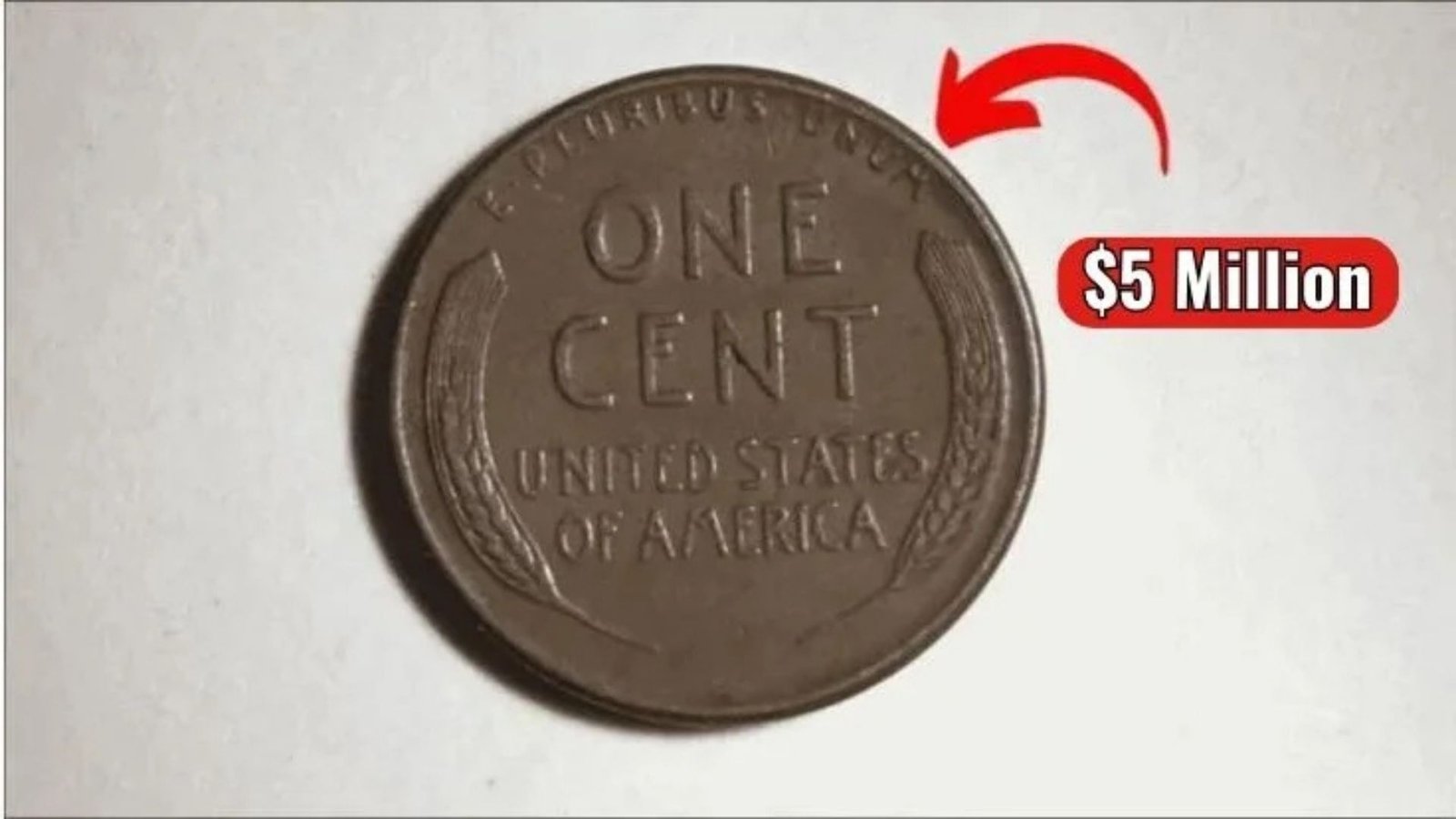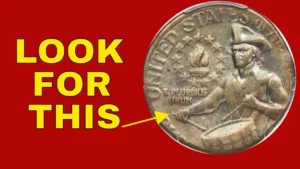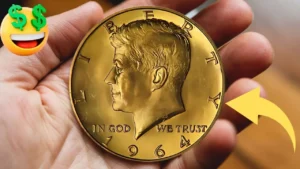Imagine finding a penny worth millions in your spare change. Sounds like a dream, right? The Lincoln Wheat Penny, a small coin from decades past, could be your ticket to a fortune. Some rare versions are valued at up to $5 million and might still be in circulation. Ready to join the hunt? Keep reading to uncover the secrets of this numismatic legend and learn how to spot a life-changing penny.
What Is the Lincoln Wheat Penny?
The Lincoln Wheat Penny is no ordinary coin. Minted from 1909 to 1958, it’s a piece of American history that might be hiding in your coin jar. Most are worth just a cent, but a rare few, like the 1943 bronze penny, could fetch $5 million at auction. Why? A wartime minting error made these coins incredibly scarce, turning pocket change into a collector’s holy grail. Ready to dig deeper?
A Coin Born in History
In 1909, the U.S. Mint unveiled the Lincoln Wheat Penny to celebrate Abraham Lincoln’s 100th birthday. Designed by Victor David Brenner, it was the first U.S. coin to feature a real person, breaking from symbolic figures like Lady Liberty. The reverse showcased two wheat stalks, earning its iconic nickname, “Wheat Penny.” Over 25 billion were minted across Philadelphia, Denver, and San Francisco, circulating through the Great Depression and two World Wars.
The real drama came in 1943. With copper needed for World War II, the Mint switched to zinc-coated steel pennies. But a few copper blanks from 1942 slipped through, creating the ultra-rare 1943 bronze Lincoln Wheat Penny. Fewer than 20 are known to exist, and their value has soared due to rarity and historical intrigue.
| Key Lincoln Wheat Penny Variants | Year | Mint Mark | Estimated Value |
|---|---|---|---|
| 1943 Bronze Penny | 1943 | D, S, or None | Up to $5 million |
| 1909-S VDB Penny | 1909 | S | Up to $300,000 |
| 1955 Double Die Penny | 1955 | None | Up to $100,000 |
Why the $5 Million Penny Matters Today
The $5 million Lincoln Wheat Penny isn’t just a coin; it’s a modern treasure hunt. Its value comes from rarity, historical significance, and collector frenzy. The 1943 bronze penny, a wartime mistake, is a numismatic legend. One sold for $1.7 million in 2010, and experts believe a pristine example could hit $5 million today.
This coin’s allure lies in its elusiveness. Stories of finds in lunch change or old jars keep the dream alive. With fewer than 20 confirmed, it could still be in circulation, hiding in a piggy bank or pocket. The hunt for this penny sparks excitement, connecting us to history and the thrill of discovery.
How to Hunt for This Rare Treasure
Ready to join the hunt for the Lincoln Wheat Penny? Start with your spare change, old coin collections, or bank rolls. Focus on pennies from the 1940s, especially 1943. Here’s how to get started:
- Check Your Change: Examine every penny for the 1943 date.
- Visit Coin Shops: Browse for Wheat Pennies at local dealers or shows.
- Buy Bank Rolls: Request older penny rolls from banks.
- Search Estate Sales: Old collections may hide rare finds.
If you find a 1943 penny, don’t clean it—cleaning can ruin its value. Use a magnet: steel pennies stick, but the rare bronze ones don’t. Weigh it; bronze pennies are 3.11 grams, steel ones 2.7 grams. Suspicious? Get it authenticated by PCGS or NGC.
| Identification Checklist | Feature | Rare (Bronze) | Common (Steel) |
|---|---|---|---|
| Magnet Test | Doesn’t stick | ✅ | ❌ |
| Weight | 3.11 grams | ✅ | 2.7 grams |
| Color | Reddish-brown | ✅ | Silver |
Jaw-Dropping Facts About the Lincoln Wheat Penny
- Rarity: Only 15–20 1943 bronze pennies are confirmed to exist.
- Record Sale: A 1943-D bronze penny fetched $1.7 million in 2010.
- Teen’s Treasure: A 1940s teen found one in cafeteria change, later selling it for hundreds of thousands.
- Counterfeit Alert: Fake bronze pennies exist, often copper-plated steel coins. Always authenticate!
- Other Gems: The 1909-S VDB (484,000 minted) and 1955 Double Die (20,000–24,000 minted) are also valuable.
Expert Tips to Spot a Valuable Penny
Numismatists share insider secrets to boost your Lincoln Wheat Penny hunt:
- Focus on Key Years: Check 1909, 1914, 1922, 1931, 1943, and 1955 for rare variants.
- Inspect Mint Marks: Look for “S” (San Francisco) or “D” (Denver) under the date.
- Spot Errors: Double-die errors, like the 1955 penny, show blurry text or numbers.
- Preserve Condition: Store coins in holders to maintain value.
- Authenticate Early: Use PCGS or NGC to verify rare finds and avoid fakes.
Join numismatic clubs or attend coin shows to connect with experts. Online forums like CoinTalk buzz with tips and sightings, fueling the hunt.
Frequently Asked Questions
Q: Are Lincoln Wheat Pennies still in circulation?
A: Yes! Though rare, they appear in old jars, bank rolls, or inherited collections.
Q: Why is the 1943 bronze penny so valuable?
A: Its rarity (fewer than 20 exist), wartime error, and collector demand drive its $5 million value.
Q: How do I know if my penny is bronze?
A: Use a magnet (bronze doesn’t stick), check for a reddish hue, and weigh it (3.11 grams).
Q: Can I sell a rare penny myself?
A: Yes, but authenticate first. Use auction houses like Heritage Auctions for high-value sales.
Q: Are all Wheat Pennies valuable?
A: No, most are worth a few cents unless rare (e.g., 1943 bronze or 1909-S VDB).
Conclusion: Your Next Penny Could Change Everything
The Lincoln Wheat Penny is more than a coin—it’s a portal to history, a wartime relic, and a potential fortune. The $5 million 1943 bronze penny, born from a minting mistake, could still be out there, waiting in a coin jar or your pocket. Its rarity and story make it a numismatic legend, fueling a nationwide treasure hunt. Next time you get change, pause. Check the date. You might just hold a piece of history worth millions. Start your hunt for the Lincoln Wheat Penny today—share this post, grab a magnifying glass, and let the adventure begin!



